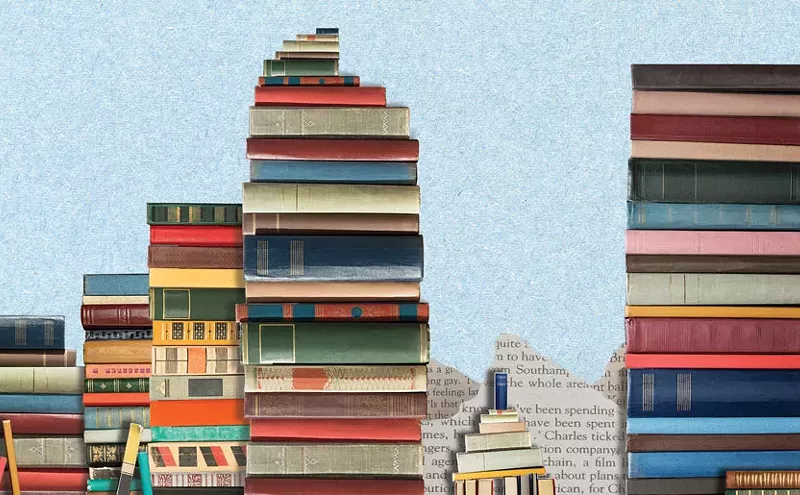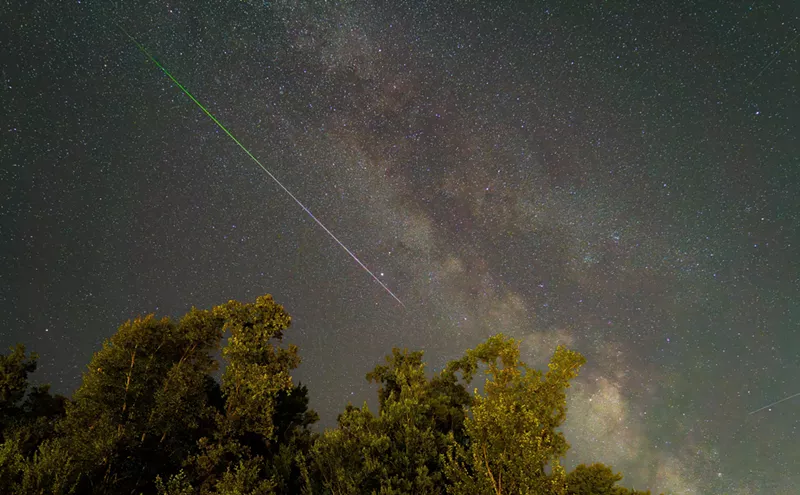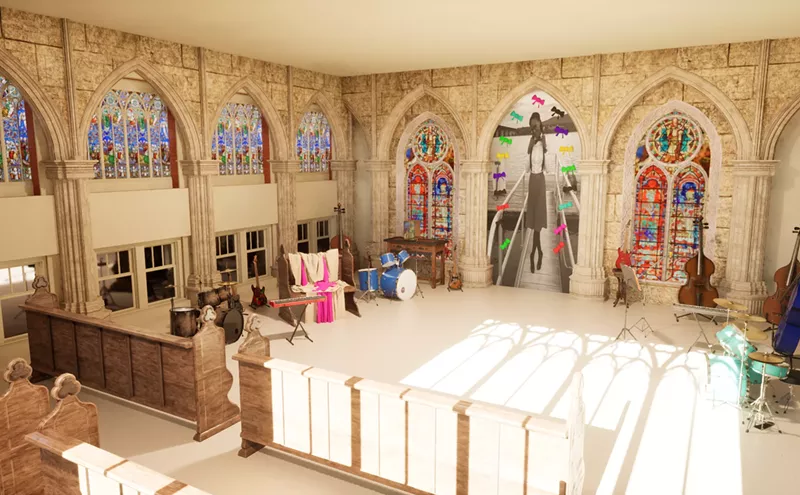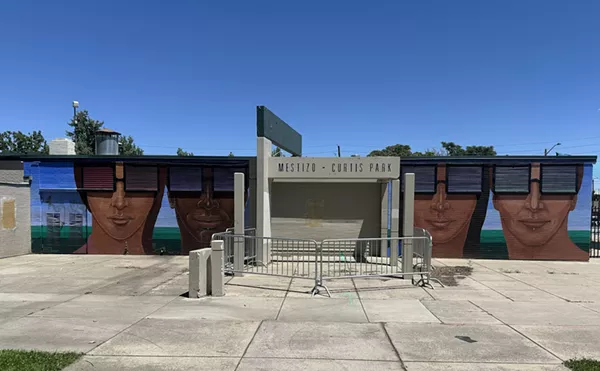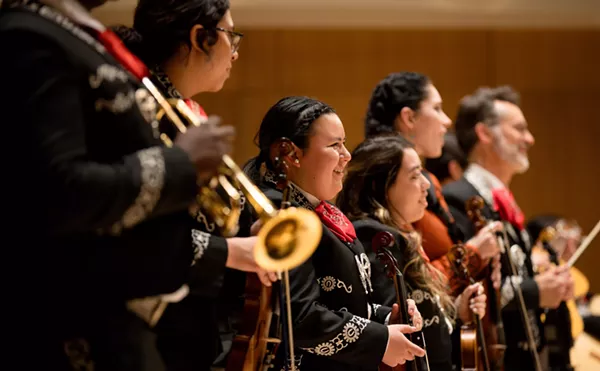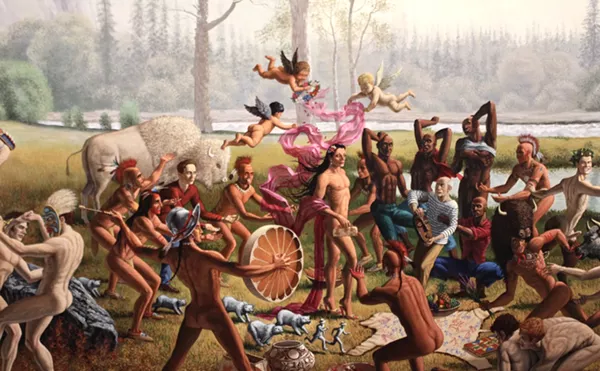Who'd guess that the backstory behind a children's book called The Poopicorn, about a dung-hungry rainbow-colored beetle, would be tragic?
Two centuries ago, Colorado’s plains were populated with herds and herds of bison — indeed, nearly sixty million of them. But the colonization of the Front Range in the second half of the nineteenth century decimated the population of bison in just two decades. While Plains Indians had hunted bison for a long time as both a spiritual activity and for sustenance, the arrival of railroads allowed bison hunting to take off as a major commercial enterprise. And the United States Army often killed bison herds to undermine the livelihoods of Indigenous people who depended on the bison.
In a short span of time, the bison were driven to the brink of extinction. The sudden absence of the bison affected the whole prairie ecosystem: The specific grazing patterns of the animals improve plant and insect diversity on the plains, and the drastic reduction of the bison affected other species, too.
In 2015, the Laramie Foothills Bison Conservation Herd Project was established as a collaborative effort by Larimer County, the City of Fort Collins, the U.S. Department of Agriculture and Colorado State University to reintroduce a herd of bison to Colorado and to restore the prairie ecosystem. These bison are direct descendants of the Yellowstone bison, which are the only herd in existence that has been around continuously since prehistoric times. Since the beginning of the project, the herd has expanded to over a hundred bison that range over 2,700 acres.
The reintroduction of the bison has coincided with one kind of animal in particular: dung beetles. Frank Thorsten Krell, senior curator of entomology at the Denver Museum of Nature & Science and a foremost expert on dung beetles, has spent a decade harvesting bison dung and studying beetle populations. Most beetles he finds are common brown beetles, but he has also discovered a small number of rare rainbow scarab beetles. Rainbow scarabs are metallic and green and reflect an array of colors. Male beetles have a large horn on their foreheads. They are so vibrant that they look tropical.
When former elementary-school teacher and literary specialist Hilary Whiton, who lives in Louisville, came across a National Geographic video featuring Krell and rainbow scarabs, she was immediately captivated. She loved weird animals, and it had been her lifelong aspiration to write a children’s book. Here was the perfect opportunity to introduce children to a magnificent but obscure creature through storytelling. She set to work on her book, which she would eventually title The Poopicorn.
The Poopicorn follows the misadventures of a male rainbow scarab beetle named Cozmo who has lofty aspirations to be an ecological do-gooder but can’t quite figure out the mechanics of landing properly. Cozmo encounters a bison, a dung pile and a female dung beetle, and by the end of the story, he comes to appreciate the full range of his magical abilities. Whiton’s book concludes with a Q&A with Krell, for curious readers who want to find out more about the science of rainbow scarab beetles.
“I love teaching kids how to read, but I feel that there’s some pretty boring things that kids are being asked to read," Whiton says. "I’ve always been a collector of great literature to share with kids, and I’ve always wanted to write a book. When the pandemic hit, I thought: I finally have no more excuses."
And thus The Poopicorn was born.

Audio By Carbonatix
[
{
"name": "GPT - Billboard - Slot Inline - Content - Labeled - No Desktop",
"component": "23668565",
"insertPoint": "2",
"requiredCountToDisplay": "2"
},{
"name": "STN Player - Float - Mobile Only ",
"component": "23853568",
"insertPoint": "2",
"requiredCountToDisplay": "2"
},{
"name": "Editor Picks",
"component": "17242653",
"insertPoint": "4",
"requiredCountToDisplay": "1"
},{
"name": "Inline Links",
"component": "18838239",
"insertPoint": "8th",
"startingPoint": 8,
"requiredCountToDisplay": "7",
"maxInsertions": 25
},{
"name": "GPT - 2x Rectangles Desktop, Tower on Mobile - Labeled",
"component": "24956856",
"insertPoint": "8th",
"startingPoint": 8,
"requiredCountToDisplay": "7",
"maxInsertions": 25
},{
"name": "Inline Links",
"component": "18838239",
"insertPoint": "8th",
"startingPoint": 12,
"requiredCountToDisplay": "11",
"maxInsertions": 25
},{
"name": "GPT - Leaderboard to Tower - Slot Auto-select - Labeled",
"component": "17676724",
"insertPoint": "8th",
"startingPoint": 12,
"requiredCountToDisplay": "11",
"maxInsertions": 25
}
]


